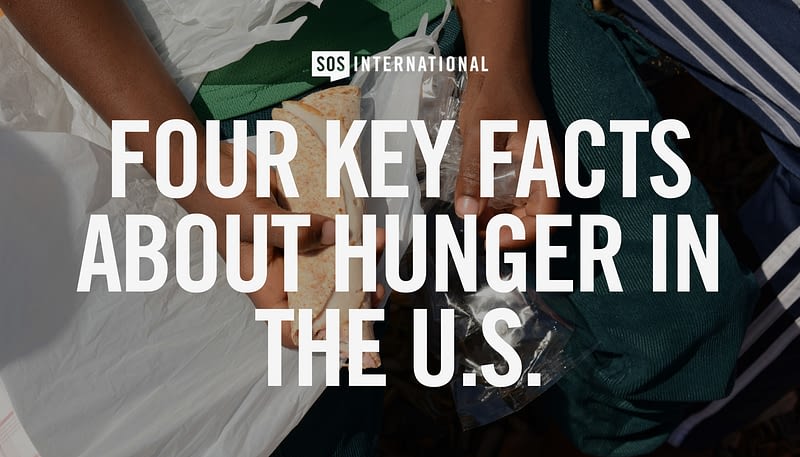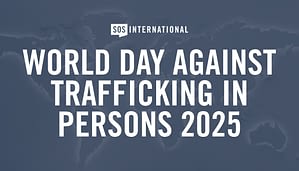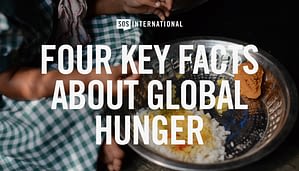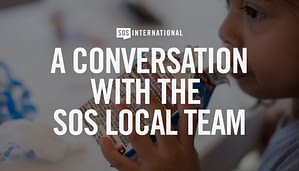Written by: SOS International
As our summer feeding programs around the world begin to wind down, our focus remains on providing food to hungry children. The global hunger issue is currently very challenging. When it comes to learning about hunger, it’s easy to be overwhelmed by the numbers and facts presented at once.
Hunger cannot be fully captured with just a few simple facts. But sometimes, just a bit of information is enough to spur us into action. We recently shared four key facts about global hunger. Today, we want to highlight the four facts you need to know about hunger in America.
In the U.S., more than 13.5% of households are food insecure ¹
Food insecurity in the U.S. has been steadily increasing since 2021. With 80% ² of the U.S. population living in urban areas, where population size, cost of living, and food demand are higher, more people are experiencing hunger.
Child hunger affects 1 in 5 U.S. children³
Children, particularly those from low-income households, are vulnerable to hunger. Childhood is a critical growth period with higher nutritional needs. Children, of course, are reliant on their parents to provide their food, and for low-income families, it becomes increasingly difficult to meet a child’s nutritional needs.
Texas leads the nation in hunger, with 5.4 million people who are food insecure⁴
For the last two years, Texas has led the nation in food insecurity. Since surpassing California in 2021, the food insecurity rate has sharply increased to 17.6% percent of Texans being food insecure. This is strongly evident in communities in the DFW area, where the food insecurity rate is 20.9 percent.
Poverty and the cost of living are the leading causes of food insecurity⁵
Poverty is a leading cause of food insecurity. Those in poverty feel the rising cost of living the most, but they are not alone. Nearly two-thirds of food-insecure people in the U.S. report incomes above the poverty line.⁶ The impact of inflation on housing, utilities, healthcare, and food is challenging to manage, as wages tend to remain unchanged.
Finding a solution to hunger in the U.S. and around the world will take all of us. Consider buying a couple of extra cans of food on your next grocery run and donating them to a local food bank. Donations are desperately needed, and every bit counts!
You can also partner with us as we continue our feeding programs beyond the summer. Your gift today will provide children with much-needed nutrition, bringing health and hope into their lives! It takes just $50 to feed 5 children for a month. Click below to make your impact!
1. Food Security in the U.S. – Key Statistics & Graphics | Economic Research Service. (2025, January 8). ERS USDA. Retrieved July 16, 2025, from https://www.ers.usda.gov/topics/food-nutrition-assistance/food-security-in-the-us/key-statistics-graphics
2. Urban Areas Facts. (2021, October 8). U.S. Census Bureau. Retrieved July 14, 2025, from https://www.census.gov/programs-surveys/geography/guidance/geo-areas/urban-rural/ua-facts.html
3. Feeding America. (n.d.). Child Hunger in America. Feeding America. Retrieved July 15, 2025, from https://www.feedingamerica.org/hunger-in-america/child-hunger-facts
4. North Texas Food Bank. (2025, May 14). Texas Leads the Nation in Hunger; DFW Ranks Third Among U.S. Metro Areas. ntfb.org. Retrieved July 17, 2025, from https://ntfb.org/blog-texas-leads-the-nation-in-hunger-dfw-ranks-third-among-u-s-metro-areas/#:~:text=The%2012%20counties%20served%20by,15.8%25
5. Feeding America. (n.d.). Hunger in America: Causes, Stats, and How to Help. Feeding America. Retrieved July 15, 2025, from https://www.feedingamerica.org/hunger-in-america
6. Feeding America. (n.d.). Understanding Poverty in America: Causes and Solutions. Feeding America. Retrieved July 14, 2025, from https://www.feedingamerica.org/hunger-in-america/poverty









